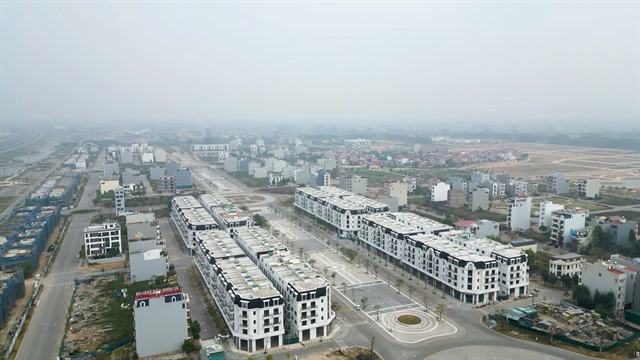SINGAPORE -
Media OutReach - 30 August 2022
- New global research by Harvard Business Review Analytic Services commissioned by
SAP SE (NYSE: SAP) has found that more than nine in ten (92%) of businesses in Asia Pacific (APAC) say that an adaptive culture and continuous employee upskilling is very important, though only 30% say their organisation is very prepared for unexpected changes or disruptions.
This is particularly important as APAC businesses increase their investment in people (62%), business processes like innovation or services (69%), and operations (43%) over the next year.
"Rarely in the course of history have so many disruptions affected so many businesses at the same time," said Cathy Ward, Chief Operating Officer, SAP Asia Pacific and Japan. "Unforeseen challenges and new priorities, from supply chain resilience to sustainability, are putting pressure on companies to adapt. What this report shows is that, while agility and resilience are critical to prepare for the future, there's still no single way to anticipate the changes the future will bring."
These insights have been revealed in a new report released today, which explores the impact of planning and anticipation of the future on business success. The report, '
Anticipating the Future for Growth and Innovation', surveyed 442 global organisations across Asia Pacific, North America, and Europe.
Strategic planning focused on short-term horizons Globally, businesses are strongly focused on strategic planning, many are working to relatively short-term horizons. Almost three quarters (73%) of organisations say they plan for between one and five years into the future. Just one in five (20%) of respondents say their planning horizon is more than five years out.
The research also found that organisations share a few common priorities when planning. The top four priorities respondents selected were revenue growth and improving profit margins (55%), finding new customers, markets, and growth areas (51%), product and service innovation (47%), and retaining and attracting talent (46%). While APAC and other respondents across the globe are mostly aligned on priorities, one difference is in building a more resilient business ecosystem which was selected by more APAC respondents (42%) than respondents from the rest of the world (29%).
Agility and talent are key obstacles to anticipating the future Despite the priority on anticipating the future, there remain critical challenges many businesses face when planning. Slow decision-making was identified as the biggest challenge by APAC respondents (38%) when anticipating the future, while attracting the right talent (36%) and retaining staff (36%) were both raised as key issues.
Another problem identified by many APAC companies was a hierarchical disconnect when it came to planning. A third (32%) of businesses said that lower-level employees not being involved in planning was a core problem. That may be because the more senior a role, the more they're encouraged, and rewarded, to have a proactive mindset and think about the future.
"Executives in APAC are much more encouraged (80%) and rewarded (55%) to have a proactive mindset about the future than most other roles," continued Ward. "But while leaders are integral to building a future-ready business, they cannot do it alone. That's why one of the most important steps a leader can take as they move towards becoming what we call the Chief Anticipation Officer is creating a culture of collaborative planning and forward-thinking mindset across the organisation."
Investment in organisational culture is essential to plan for multiple different futures The culture a business nurtures and maintains has a disproportionately large role on success in planning for the future. Globally, more than half (57%) of respondents said that creating a culture that embraces change is an important organisational factor in anticipating the future - the most-selected response.
But building that culture requires a focus on talent acquisition, engagement, and upskilling. Organisations are placing high importance on the ability to attract new talent with needed skills (globally at 59%), aligning employee skill sets with the right roles and responsibilities (59%), and the ability to upskill current employees (56%).
The survey also found that technology and digital infrastructure are on the minds of many executives, though they may not be organisations' top focuses. Strong digital infrastructure and cybersecurity skills (42%) was noted as the fourth most-cited answer when asked which skills and competencies most help organisations plan for the future. Additionally, lacking the technology an organisation needs for the future is also an important challenge to anticipate the future for APAC respondents (32%).
"This moment in time is an incredible opportunity for businesses to look to the future," concluded Ward. "Continuous change demands flexible, forward-thinking action in three critical areas: how people will work, how we will do business, and how we will operate our organisations. By focusing on these areas, we can break away from traditional methods, better anticipate what's coming next, and begin to drive new, successful outcomes in the future."
The full
Anticipating the Future for Growth and Innovation report by SAP and Harvard Business review is available at this link:
https://www.sap.com/sea/cmp/oth/sea-rise-of-chief-anticipation-officer/index.html Visit the
SAP News Center.
Follow SAP on Twitter at
@SAPNews.
Note to editors: To preview and download broadcast-standard stock footage and press photos digitally, please visit
www.sap.com/photos. On this platform, you can find high resolution material for your media channels. To view video stories on diverse topics, visit
www.sap-tv.com. From this site, you can embed videos into your own Web pages, share video via email links, and subscribe to RSS feeds from SAP TV.
For customers interested in learning more about SAP products: Global Customer Center: +49 180 534-34-24
United States Only: 1 (800) 872-1SAP (1-800-872-1727)
Hashtag: #SAP
About SAP
SAP's strategy is to help every business run as an intelligent, sustainable enterprise. As a market leader in enterprise application software, we help companies of all sizes and in all industries run at their best: SAP customers generate 87% of total global commerce. Our machine learning, Internet of Things (IoT), and advanced analytics technologies help turn customers' businesses into intelligent enterprises. SAP helps give people and organizations deep business insight and fosters collaboration that helps them stay ahead of their competition. We simplify technology for companies so they can consume our software the way they want – without disruption. Our end-to-end suite of applications and services enables business and public customers across 25 industries globally to operate profitably, adapt continuously, and make a difference. With a global network of customers, partners, employees, and thought leaders, SAP helps the world run better and improve people's lives. For more information, visit

|
|
www.sap.com.
This document contains forward-looking statements, which are predictions, projections, or other statements about future events. These statements are based on current expectations, forecasts, and assumptions that are subject to risks and uncertainties that could cause actual results and outcomes to materially differ. Additional information regarding these risks and uncertainties may be found in our filings with the Securities and Exchange Commission, including but not limited to the risk factors section of SAP's 2021 Annual Report on Form 20-F.
© 2022 SAP SE. All rights reserved.
SAP and other SAP products and services mentioned herein as well as their respective logos are trademarks or registered trademarks of SAP SE in Germany and other countries. Please see
https://www.sap.com/copyright for additional trademark information and notices.

 Media-OutReach Newswire
Media-OutReach Newswire







